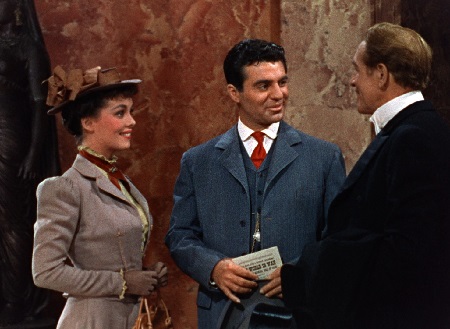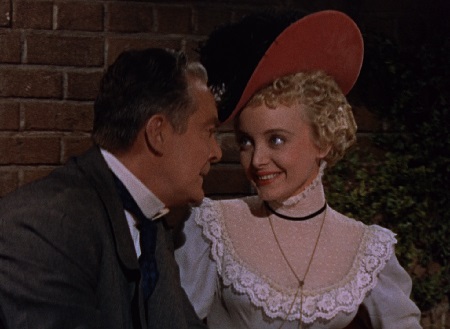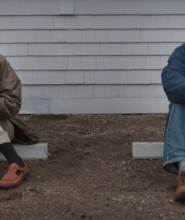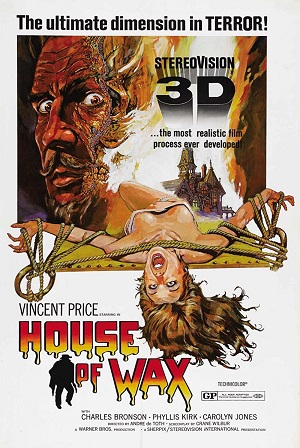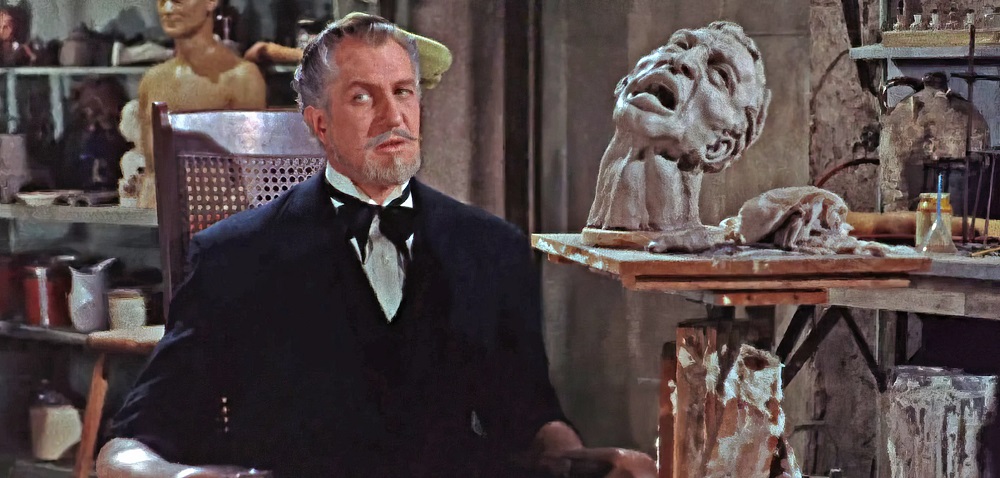
Unforgettables: Cinematic Milestones #16 – House of Wax (1953)
by Sara Michelle Fetters - May 24th, 2023 - Features
Eternal beauty comes with a price – Vincent Price – in the House of Wax, a timeless gothic 3-D horror masterpiece celebrating its 70th anniversary
NOTE: This feature originally appeared in the April 28, 2023 edition of the Seattle Gay News. It is reprinted here by permission of the publisher Angela Craigin.
There is something inherently terrifying yet also uncomfortably beguiling about tales involving petrification. Medusa is one of Greek mythology’s most powerful (and most memorable) characters for good reason. Midas and his golden touch is a fable guaranteed to send chills down the spine even as it enthralls the imagination. The Twilight Zone episode “The After Hours” starring Anne Francis and Elizabeth Allen is one of the iconic television show’s finest, and most spine-tingling, 25 minutes.
With the 3-D craze of the 1950s in its infancy, Warner Bros. reached into its vault and tasked hard-boiled filmmaker André De Toth, known for disquieting noirs like Pitfall and rough-and-tumble westerns like Springfield Rifle, to remake Michael Curtiz’s 1933 classic Mystery of the Wax Museum utilizing the new technology. The result was 1953’s landmark House of Wax, and it is justifiably considered a bona fide classic.
My first encounter with House of Wax came shortly after I was shown 1958’s The Fly by my parents. I quickly became obsessed with its star Vincent Price, gobbling up all of the vaunted actor’s Edgar Allan Poe adaptations directed by Roger Corman along with his fabulous collaborations with William Castle, House on Haunted Hill and The Tingler. I loved them all.
It was my grandmother who urged me to seek this one out. Not sure why it was so hard to get my hands on, but I remember finally discovering a copy at the downtown Spokane library. I was far from disappointed.
It is the story of a promising sculptor, Prof. Henry Jarrod (Price), who is known for his eerily lifelike wax sculptures. But he is betrayed by his greedy business partner (Roy Roberts) and is left for dead underneath the flaming rubble of a massive fire. Miraculously resurrected nearly two years later but now saddled to a wheelchair and without the use of his hands, Jarrod reopens his House of Wax utilizing the talents of his new disciples: a lumbering deaf-mute (Charles Bronson, then still known as Charles Buchinsky) and an alcoholic ex-con (Nedrick Young).
The place is an immediate hit. The museum’s salacious depictions of murder, death, and other devilish occurrences packs the place with wide-eyed, slack-jawed customers. The kicker? Most of the displays aren’t wax dolls whose creation was supervised by Jarrod and meticulously completed by his pupils. They are instead quite dead, each figure the body of the recently deceased covered in a thin layer of wax and brazenly showcased for all to see.
Watching this as a youngster was admittedly strange. Not because De Toth’s macabre masterwork was so much fun or because Price’s villain was a hypnotically sinister hoot (although both items are undeniably true), but more because of which facets of the thriller were drawing so much of my attention. I had trouble figuring out who I related to more. Plucky heroine Sue Allen (Phyllis Kirk), whom Prof. Jarrod is intent on transforming into his beloved Marie Antoinette? Or was it Cathy Gray (Carolyn Jones), the gorgeous — yet kind — gold digger tragically destined to become a part of the devious sculptor’s wax menagerie as his treasured Joan of Arc?
It shouldn’t have been a question. Who wants to be converted into a lifeless statue, after all? But as a youngster dealing with their gender identity and realizing they were likely never going to see their outside match all they were feeling internally, the thought of being magically blessed with eternal beauty for all to see and covet was unnervingly appealing. I could not help but be drawn to Cathy’s transformation, and much like other similar stories in which people are transmuted from one form to another — and even though the touch of Prof. Jarrod’s evil hands was deathly permanent — I was still greedily fascinated all the same.
But the same went for Sue Allen. While she does ultimately end up the proverbial damsel in distress, as portrayed by the pluckily resilient Kirk, Sue still has her own agency. She investigates Prof. Jarrod even when no one else believes her that something horrible is going on. She knowingly flirts with danger, because she is determined to get justice for her murdered friend. Yet Kirk never loses an ounce of her femininity and, because of this, she’s that rare 1950s gothic horror heroine who doesn’t have to change who she is or take on a more masculine countenance while searching for the truth.
De Toth directs the heck out of House of Wax, and it’s one of the only 3-D offerings of the period that doesn’t rely entirely upon its visual gimmick to shock its audience. There is sublime depth to the imagery, and not nearly as many “gotcha!” sequences in which items or limbs are thrust or thrown out toward the viewer as one would expect (the famous carnival barker post-intermission scene notwithstanding).
Instead, De Toth and his talented technical team do a stupendous job filling the frame back to front with exquisite details. This allows the feature to work whether or not it is viewed in 3-D. Items linger throughout the frame. Prof. Jarrod’s museum appears to be far larger and more expansive than it actually is. It also allows for the villain’s henchman, a marvelously memorable Bronson in one of his first credited roles, to slink in and out of the shadows with creepy dexterity. The building tension as he silently stalks a clueless Sue during the climax is divine.
Price would not become a full-blown horror icon until the release of The Fly, but the seeds for his makeover from underutilized if supremely talented character actor — prepare to be amazed at 1944’s Laura, 1946’s Dragonwyck, and 1951’s His Kind of Woman — to above-the-title superstar were certainly planted here. You can see it all click, like a switch has been turned on, the malevolent gleam hiding within his mesmeric eyes soon to be put to spectacular use, most notably by the aforementioned Corman and Castle.
Yet I keep finding myself returning to House of Wax again and again, mainly due to my continual fascination with its two female leads. Do I long to be more like Sue, feisty and selfless? A free thinker and a good friend? Someone who fights with every ounce of her heart, no matter what the cost, for the things she believes in and for those she loves? Or would I give it all up to be an inanimate statue, a timeless paragon of feminine beauty all would gaze upon in awe and desire, more or less a life-sized Barbie doll?
As an adult whose life has seen numerous twists and turns, I know the answer to those questions, and it’s unlikely anyone would be surprised by them. But the genius of House of Wax is that, with every viewing, for a few brief moments, this all becomes a deliciously disturbing question mark once again, and I’m lost in De Toth’s ominous saga of revenge, creation, terror, and resilience as if I were watching it for the first time. If this isn’t the mark of greatness, then I’m not sure what would be.
Now celebrating its 70th anniversary, House of Wax is available on Blu-ray, DVD, and to purchase digitally in HD on multiple platforms.
